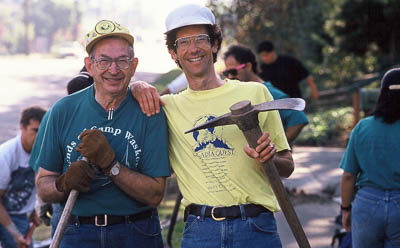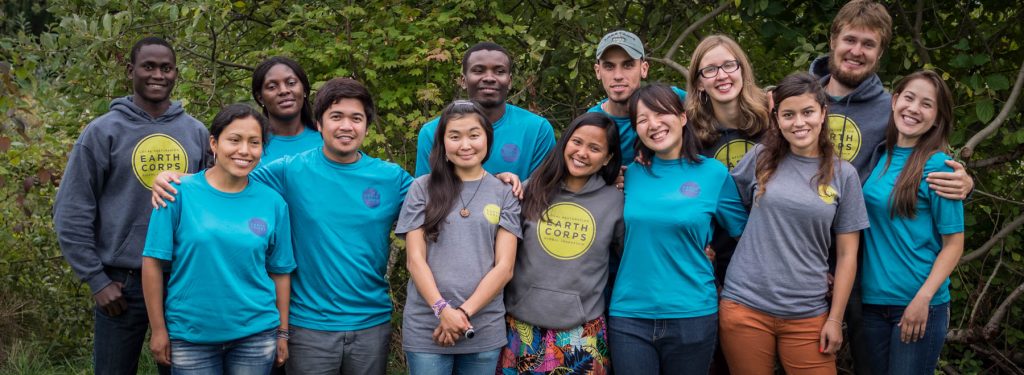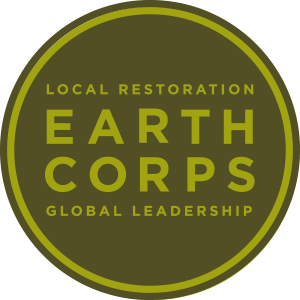Long before the advent of Facebook, EarthCorps planted the seeds of a global network of environmental professionals in the US and abroad. More than twenty years later, EarthCorps is pushing new boundaries by innovating ecological practice, evolving how people learn leadership, and engaging diverse communities in hands-on action.
The Beginning

Founder Dwight Wilson (right) with a member of the 1930’s Civilian Conservation Corps. The CCC was an inspiration for EarthCorps.
How can we build a more peaceful, verdant world?
The original answer was a Peace Corps for the Earth – an Earth Corps. Young environmentalists from many different countries could come together to plant trees, exchange perspectives, learn through service, and return home to implement projects and share what they learned.
Dwight Wilson dreamed up this idea while working as a Peace Corps volunteer in Chile and Honduras. In 1993, he and several friends tried it out in an experimental program called Cascadia Quest. This effort grew into a year-round intensive program for promising young leaders. And thus our corps program was born. To date, more than 1,000 young leaders and 200,000 community volunteers have worked together to improve the waters and lands of Puget Sound.
Historical highlights include:
- 1993: Dwight Wilson forms an experimental reverse Peace Corps called Cascadia Quest
- 1995: Cascadia Quest added the name King County World Conservation Corps and started a public-private partnership with King County that created the corps program as a pioneering training and national service experience.
- 1999: Steve Dubiel becomes Executive Director and renames organization to EarthCorps
- 2000: Led volunteers to plant 200,000 trees in the Mountains to Sound Greenway; and we earned the Anne V. Farrell Award for youth programs.
- 2003-2004: Initiated effort that placed 42 acres of Seward Park forest into restoration, leading to the creation of the Green Seattle Partnership in 2004, an effort to restore 2,500 acres of forested parks in 20 years.
- 2007-2008: Expanded our volunteer program to cities of Kirkland, Tacoma, Mercer Island, Everett.
- 2011: Formalized a partnership with Friends of the Hylebos to launch watershed improvement initiative in the Hylebos watershed.
- 2012: Adopted People For Puget Sound’s restoration program as they closed their doors.
- 2013: Released first US field study on Blue Carbon, based on core samples in coastal wetlands in the Snohomish Estuary.
- 2014: Collaborated to establish Commencement Bay Stewardship Collaborative, a first-in-the-nation model to maintain and monitor 17 Natural Resources Damage Assessment sites in perpetuity.
- 2017: Began a 10-year longitudinal impact evaluation of our flagship corps program.
- 2018: Produced a Native Pollinator Habitat Restoration Guide for the Puget Sound region.
- 2018: In honor of our 25th Anniversary, we increased our Corps Program by 25%.
- 2019: Senator Cory Booker cited our report on Blue Carbon as data for his climate action plan.
- 2019: Celebrated our 200,000th volunteer.


